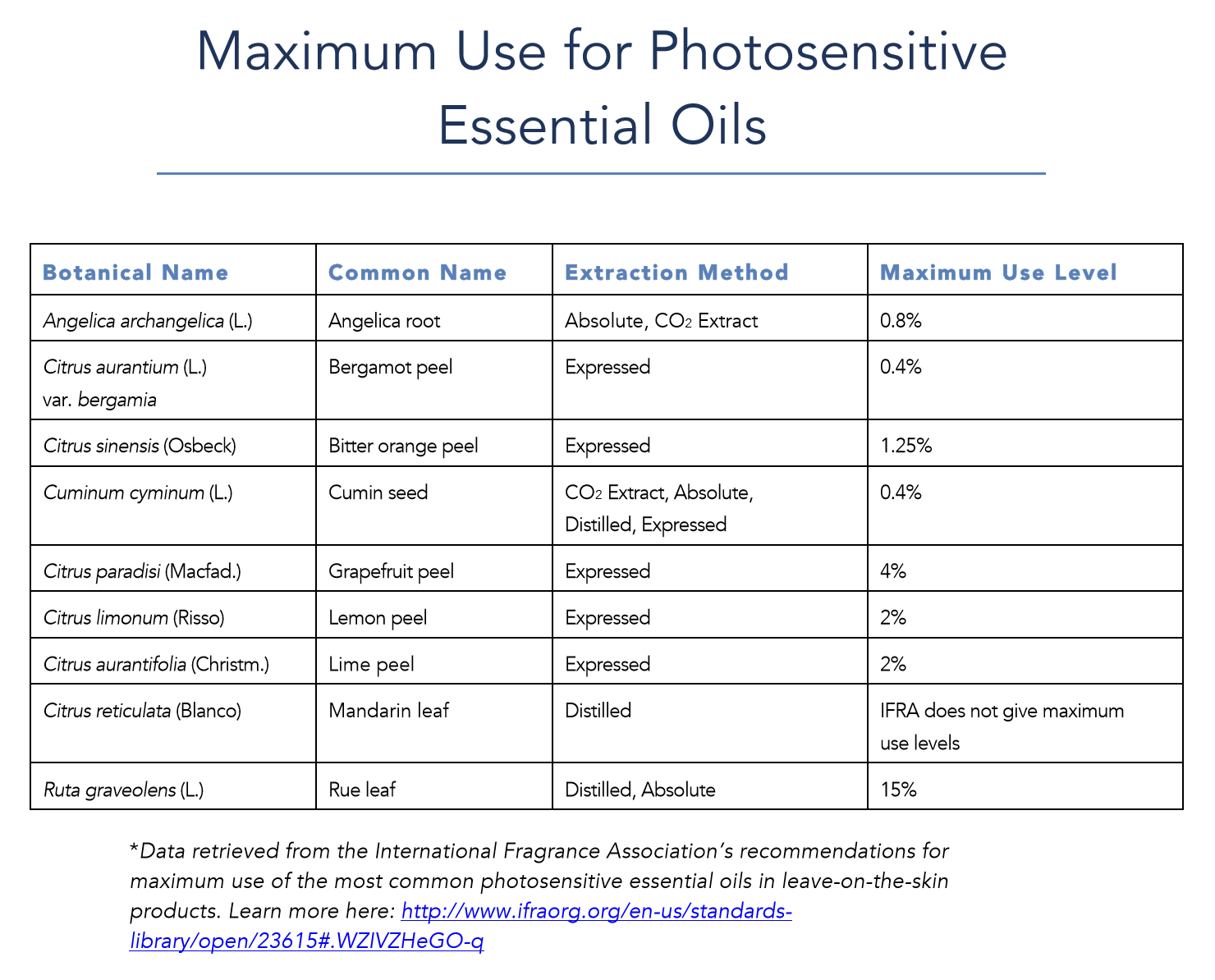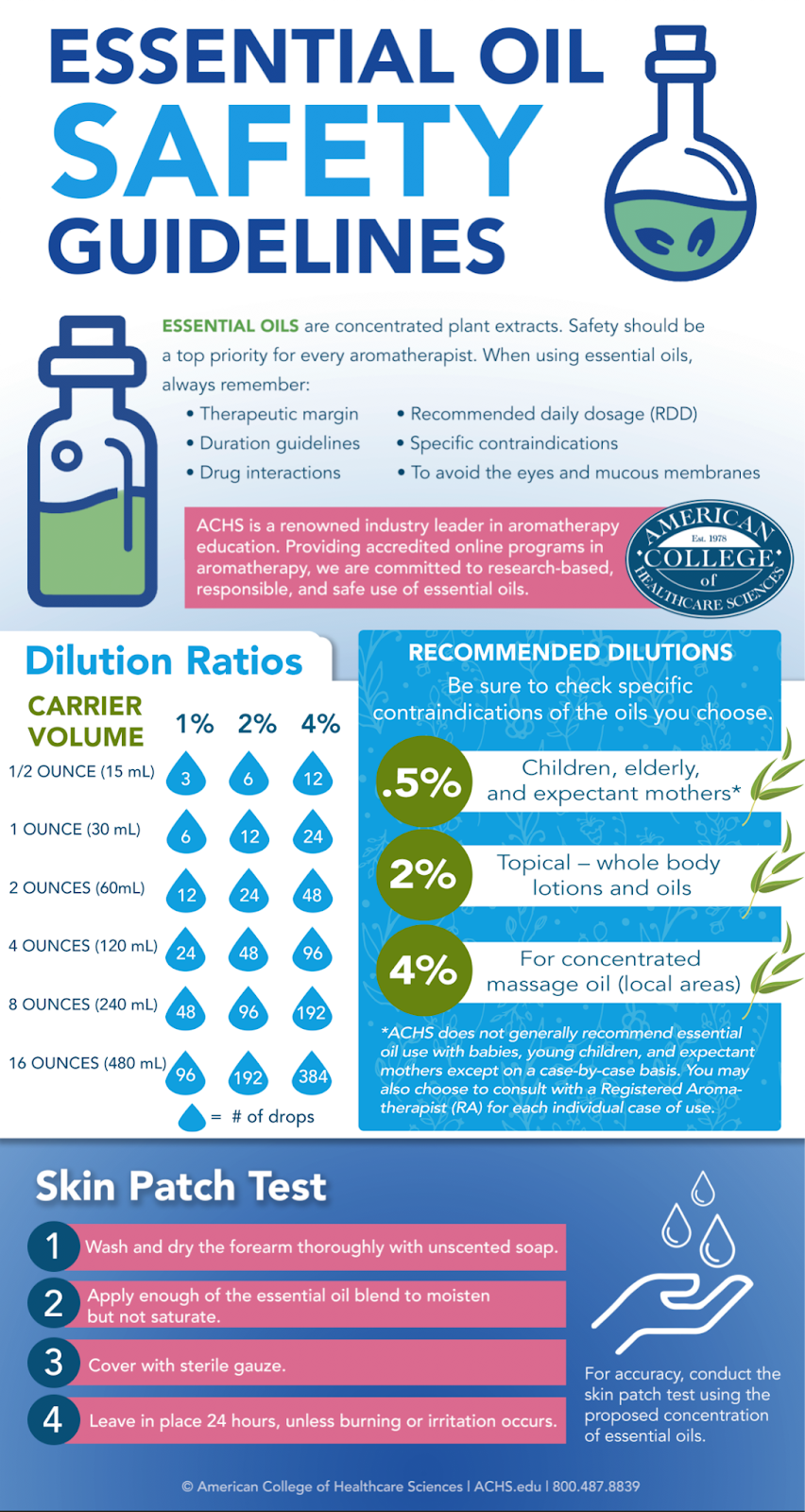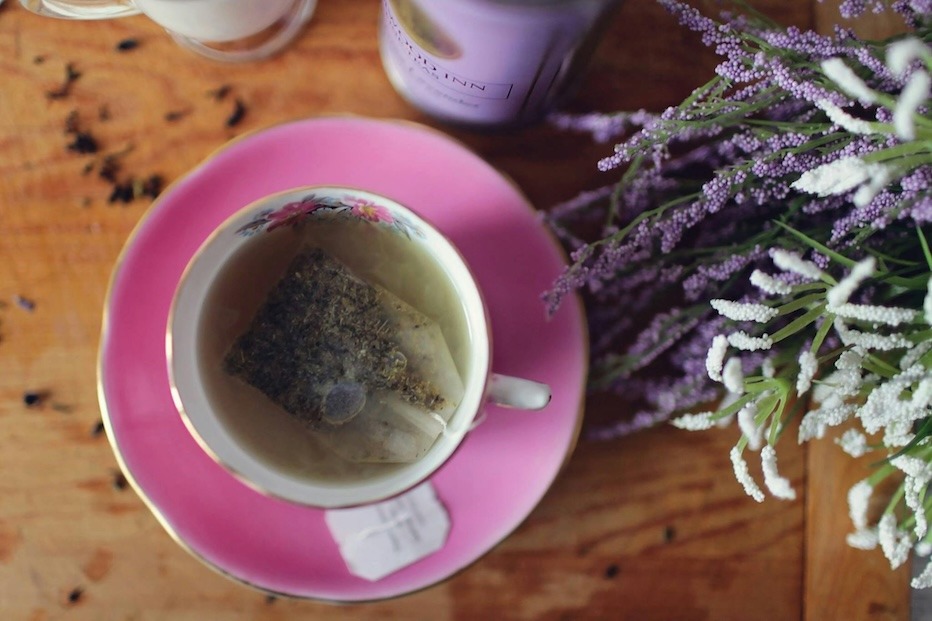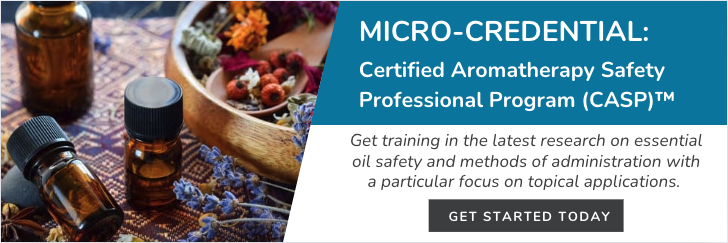The Rising Trend of Essential Oils and the Importance of Safe Usage
Essential oils are on the rise in popularity, and for good reason. Any aromatherapist will tell you that the safe and appropriate use of essential oils can bring great benefits. From encouraging relaxed sleep to improved headache relief, essential oils are powerful wellness supporters.
However, as with any health and wellness support, there are methods for safe usage and methods for unsafe usage. A lack of education on safety and proper usage can lead to negative results. Essential oils are highly concentrated plant substances, and you should treat them with caution and care.
1. The Hidden Dangers of Photosensitive Oils and Sun Exposure
The first hazardous mistake that you can make with essential oils is not knowing their properties. Specifically, it’s very important to know which essential oils are photosensitive. Photosensitive, or phototoxic, essential oils usually contain furocoumarins, which can cause severe burns and increase your skin’s exposure to UV light or sunlight. Applying a photosensitive essential oil to your skin without a carrier oil, or before you are exposed to UV light or sunlight, can put you at risk for second or third-degree burns. If you know you’ll be in the sun, avoid photosensitive oils in products that are designed to stay on the skin, like body lotions or creams. For DIY products, make sure that the use level in a leave-on-the-skin product is within the recommended maximum dilution percentage level required by the International Fragrance Association (IFRA). If there are blends of phototoxic essential oils in your leave-on-the-skin products, reduce the percentage as needed. There are no restrictions for rinse-off products, so a shower gel or liquid body wash is not as risky. To learn more, you can check the standards on the IFRA website. The recommended maximum use level for some of the most common photosensitive essential oils in leave-on-the-skin products includes:  It’s interesting to note that expressed citrus essential oils—not steam-distilled citrus oils—cause photosensitivity. Furocoumarins are large molecules that do not evaporate, and consequently, they do not transfer over through steam during the distillation process, but they do transfer over with expression. Most essential oil bottles will state whether your oil is expressed or steam distilled. Not sure if your oil is expressed or distilled? Play it safe by avoiding direct sunlight or UV light after applying. Also note: absolutes or carbon dioxide extracts (CO2 extracts) will most likely be phototoxic as the extraction process brings over heavier, more complex molecules like furocoumarins.
It’s interesting to note that expressed citrus essential oils—not steam-distilled citrus oils—cause photosensitivity. Furocoumarins are large molecules that do not evaporate, and consequently, they do not transfer over through steam during the distillation process, but they do transfer over with expression. Most essential oil bottles will state whether your oil is expressed or steam distilled. Not sure if your oil is expressed or distilled? Play it safe by avoiding direct sunlight or UV light after applying. Also note: absolutes or carbon dioxide extracts (CO2 extracts) will most likely be phototoxic as the extraction process brings over heavier, more complex molecules like furocoumarins.
2. Safe Application Practices for Essential Oils
The second hazardous mistake you can make in your usage of essential oils is an incorrect application. There are many ways to use essential oils, and each method has its own precautions that safe users should follow.
Skin/Topical Use
Certain oils may cause irritation if used in too high a concentration. If you happen to be a highly sensitive person (HSP), try a skin patch test to determine any potential irritation before you use essential oils, and always dilute appropriately. (See instructions for skin patch testing and dilution ratios below.) Irritation from an essential oil is a direct result of contact with the oil. It is localized and does not involve the immune system. Once the offending essential oil is removed, using a base oil or full-fat milk, the skin can begin to recover. You can even use tepid water in a pinch, but it’s not as effective as oil or milk. For people with sensitive skin, essential oils can sometimes cause more damage, while other folks can withstand the same concentration of essential oil without a problem. For a quick guide on how to safely use essential oils in a diluted topical application in the bath, check out ACHS President Dorene Petersen’s video on the subject. Several essential oils, like the ones below, can cause skin or mucous membrane irritation:
- Steam-distilled cinnamon bark and leaf Cinnamomum zeylanicum (Blume)
- Steam-distilled clove bud, leaf, and stem Syzygium aromaticum (L.) (because of the eugenol content, which is an irritant and potential sensitizer)
- Steam-distilled lemongrass leaf Cymbopogon citratus (Stapf)
There are three important factors when considering essential oil applications: dilution ratio, recommended daily dosage, and duration guidelines. When in doubt, conduct a skin patch test, as demonstrated in the infographic below. 
Understanding and Mitigating Risks of Essential Oil Inhalation
Inhalation is arguably the safest means of administering essential oils, and it’s the fastest way to get essential oils into your bloodstream. However, it’s still critical to use oils with caution, even when diffusing. When diffusing essential oils, always:
- Diffuse in a well-ventilated area
- Diffuse for 30-minute intervals and take regular breaks
- Make sure pets (especially cats) have the option to leave the room if they don’t like the aromas
- Follow dilution guidelines
Navigating the Dos and Don’ts of Oral Essential Oil Use – Internal/Oral Use
While only a few specific essential oils are suitable for oral administration, this doesn’t apply to all essential oils, nor do all situations call for oral application. It’s important to ask yourself if oral administration is actually necessary for each unique situation you seek to address with essential oils. Once you’ve come to a decision, you must then consider…
- Dose
- Concentration
- Duration
Toxicity or poisoning is often the result of using a dose much higher than the therapeutic dose or recommended daily dose (RDD). The Martindale Extra Pharmacopoeia provides excellent guidelines for using essential oils orally and notes acceptable daily intakes per kilo of body weight. Tea tree Melaleuca alternifolia (Cheel) and Eucalyptus Eucalyptus spp. are two common culprits for poisoning. This typically occurs when someone has ingested too much or a child drinks the oil in error. Always keep your oils out of reach of children. We suggest purchasing childproofed essential oil lids and a child lock for your essential oil cabinet. The bottom line is that oral administration is best left to those who are trained and have experience in clinical aromatherapy.
Cooking Use
Though direct oral application can come with significant risks, some essential oils are delightful when used in cooking. Curious to explore? Check out our free eBook: Top 10 Culinary Essential Oils. But remember, after checking the cautions and contraindications for your oil of choice, dilute thoroughly with a carrier oil like olive or coconut oil. You can also check the U.S. Food and Drug Administration Generally Recognized as Safe List (GRAS) for oils that can be used in very minimal amounts in cooking. Additionally, when available, it’s always best to use certified organic essential oils.
3. Contraindications and Safety: Informed Use of Essential Oils
The third hazardous mistake has the potential to be one of the most dangerous essential oil mistakes. Never ignore or disregard basic essential oil safety information. Essential oils can react with prescription drugs and supplements, and they can cause adverse reactions when used in excess. They can react differently in children, the elderly, and those with weakened immunity. Educating yourself on the cautions and contraindications surrounding essential oils is imperative. For example, anise Pimpinella anisum (L.) essential oil contains toxic constituents anethole and phenolic ether. When used in excessive doses (more than three drops, three times per day, or with prolonged use over two to three weeks), anise has the potential to cause circulatory and nervous system disorders. Also, a 2012 review study showed that anise P. anisum essential oil increases the effects of drugs that affect the central nervous system (CNS). It also showed anise lowered the antidepressant effect of some medications. Another example is fir Abies balsamea (L.), which has been shown to potentially inhibit certain metabolic pathways in the liver, which could potentially limit the effectiveness of some diabetes medications.
Check out ACHS’s Apothecary Shoppe to Get Your Essential Oils
Essential oils can enhance and enrich your wellness practice. But, like all things in life, the more you are educated about what you’re using, the better your outcomes will be. Make sure you’re informed about the usage practices of your chosen essential oil and method of application, and you’ll be able to enjoy the benefits of aromatherapy safely! Explore the ACHS college store, the Apothecary Shoppe, to find high-quality holistic health products. Enjoying aromatherapy safely should not be based on fear but on education. To continue your health and wellness education, check out ACHS’s Holistic Health and Wellness blog! If you’re ready to continue your aromatherapy education in a classroom setting, check out the aromatherapy classes and certificates we offer!
1 Samojlik, I., Mijatović, V., Petković, S., Skrbić, B., & Božin, B. (2012). The influence of essential oil of aniseed (Pimpinella anisum, L.) on drug effects on the central nervous system. Fitoterapia, 83(8):1466-73.
2 Tam, T.W., Liu, R., Arnason, J.T., Krantis, A., Staines, W.A., Haddad, P.S., et al. (2011). Cree antidiabetic plant extracts display mechanism-based inactivation of CYP3A4. Can J Physiol Pharmacol., 89(1):13-23. doi: 10.1139/y10-104.
This article is for informational purposes only. It is not intended to treat, diagnose, cure, or prevent disease. This article has not been reviewed by the FDA. Always consult with your primary care physician or naturopathic doctor before making any significant changes to your health and wellness routine.





